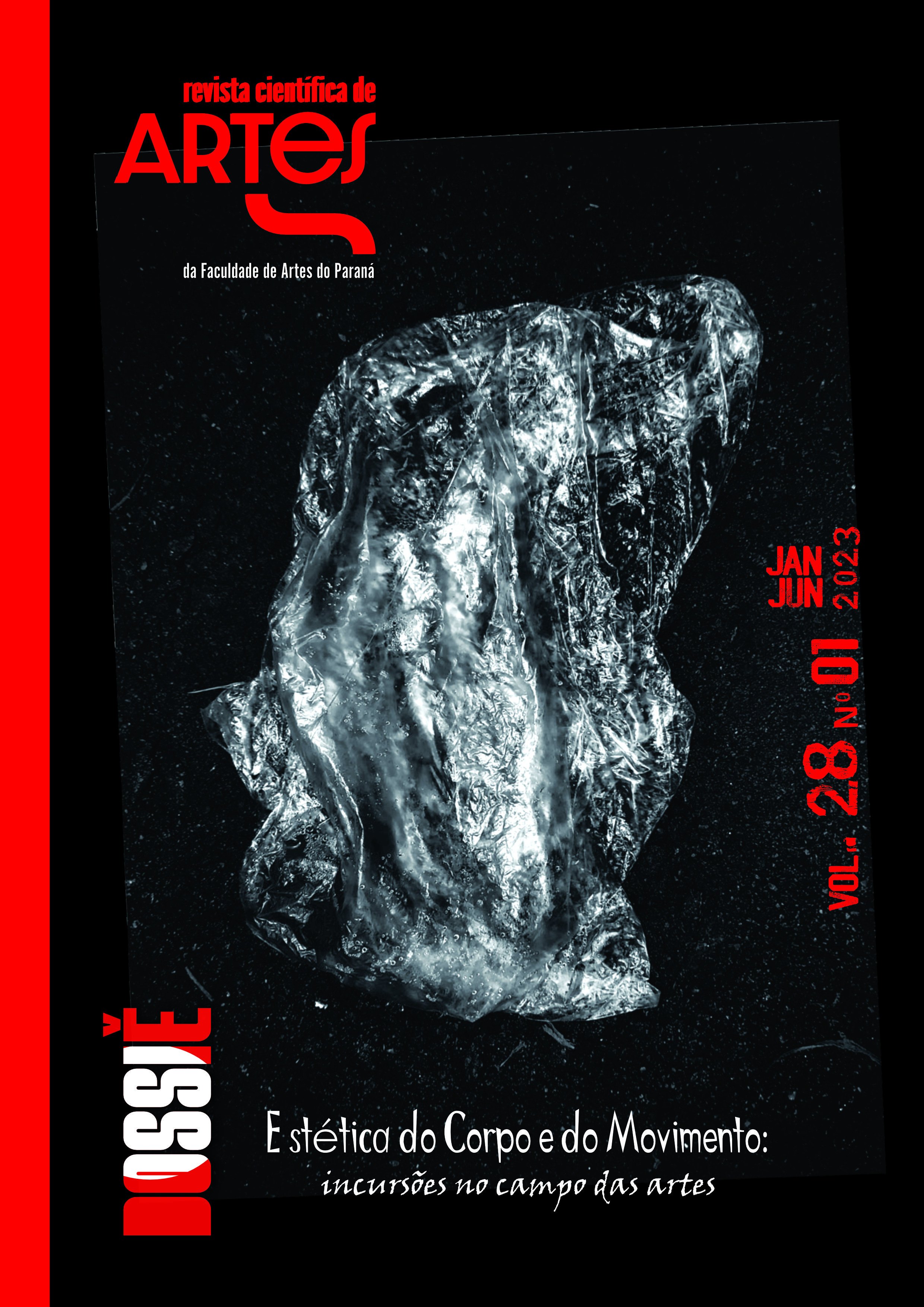Clint Eastwood actor y director
DOI:
https://doi.org/10.33871/19805071.2023.28.1.7576Palabras clave:
Clint Eastwood, Cine, actor, postclásico, gesto sicológicoResumen
Este artículo pretende reflexionar sobre la obra de Clint Eastwood como director y como actor, utilizando los conceptos de clásico y postclásico, según las definiciones de David Bordwell, Kristin Thompson y Janet Staiger, y la teoría del Gesto Psicológico de la escuela de interpretación teatral del ruso Michael Checkhov. Para pensar en Eastwood como director y actor, los conceptos de postclásico y el Gesto Psicológico, y de estudiaremos secuencias de apertura de las películas Escalofrio en la noche (Play Misty for Me, 1971), su primer trabajo como director y El fugitivo Josey Wales (The Outlaw Josey Wales, 1976). Basamos el criterio del análisis de las escenas de apertura como reveladoras y significativas para analizar el estilo de un cineasta, en la obra seminal de Jacques Aumont y Michel Marie Análise de filme (2010)
Descargas
Citas
ASLAN, Odette. O ator no século XX. São Paulo: Perspectiva, 2010.
AUMONT, Jacques; MARIE, Michel. A análise de filme. Lisboa: Texto e Grafia, 2010.
AVERY, Kevin. Conversations with Clint: the lost interviews with Paul Nelson, 1979-1983. New York: Continum international publishing group, 2011.
BORDWELL, David; THOMPSON, Kristin; STAIGER, Janet. The classical Hollywood cinema; film style and mode of production to 1960. London: Routledge, 1985.
BORDWELL, David. The way Hollywood tells it. University of California Press, Berkeley, Los Angeles, London, 2006.
BENOLIEL, Bernard. Clint Eastwood. Paris: Cahiers du cinéma, 2010.
CAHILL, Tim. Clint Eastwood’s American Dream. Rolling Stone, [s. l.], 31 maio 1985. Disponível em: https://www.rollingstone.com/movies/movie-features/clint-eastwoods-american-dream-82946/. Acesso em: 07 dez. 2020.
CAUGHIE, John. Theories of Autorship. Londres-Nova York: Routledge, 1981.
CHEKHOV, Michael. Para o ator. São Paulo: Martins Fontes, 2015.
EYES ON CINEMA. Pauline Kael calls Clint Eastwood “an extremely mediocre director” in 1977 interview. YouTube, San Bruno, 19 set. 2018. Disponível em: https://www.youtube.com/watch?v=F9GGn29-Zlg. Acesso em: 07 dez. 2020.
HUTCHEON, Linda. Uma teoria da paródia. Lisboa: Almedina, 1989.
JUNG, Carl. Tipos psicológicos. São Paulo: Editora Vozes, 1991.
KAEL, Pauline. Dirty Harry: Saint Cop. New Yorker, New York, 15 jan. 1972. Disponível em: https://scrapsfromtheloft.com/2017/12/28/dirty-harry-saint-cop-review-by-pauline-kael/. Acesso em: 07 dez. 2020.
MASCARELLO, Fernando. Cinema hollywoodiano contemporâneo. In: MASCARELLO, Fernando (Org.). História do Cinema Mundial. Campinas: Papirus, 2006. (p. 333-360).
SARRIS, Andrew. Notes on the Auteur Theory. Filme Culture, [s. l.], n. 27, inverno de 1962-63.
SCHICKEL, Richard. Clint Eastwood: a biography. New York: Vintage Books, 1996.
SCHICKEL, Richard. Hollywood’s Honchos. Time, New York, 9 jan. 1978. Disponível em: https://www.instagram.com/p/5N0pcsq6yy/. Acesso em: 07 dez. 2020.
SIMSOLO, Noel. Clint Eastwood. Paris: Ed. L’Etoile/Cahers du cinema, 1990.
VINICOUR, John. Clint Eastwood, seriously. New York Times Magazine, New York, 24 fev. 1985. Disponível em: https://www.nytimes.com/1985/02/24/magazine/clint-eastwood-seriously.html. Acesso em: 07 dez. 2020.
Descargas
Publicado
Cómo citar
Número
Sección
Licencia
Os autores detém os direitos autorais, ao licenciar sua produção na RevistaCientífica/FAP, que está licenciada sob uma licença Creative Commons. Ao enviar o artigo, e mediante o aceite, o autor cede seus direitos autorais para a publicação na referida revista.
Os leitores podem transferir, imprimir e utilizar os artigos publicados na revista, desde que haja sempre menção explícita ao(s) autor (es) e à Revista Científica/FAP não sendo permitida qualquer alteração no trabalho original. Ao submeter um artigo à Revista Científica/FAP e após seu aceite para publicação os autores permitem, sem remuneração, passar os seguintes direitos à Revista: os direitos de primeira edição e a autorização para que a equipe editorial repasse, conforme seu julgamento, esse artigo e seus metadados aos serviços de indexação e referência.


